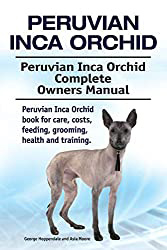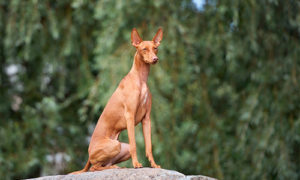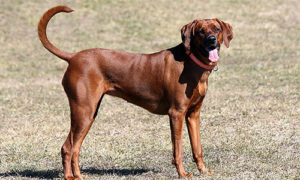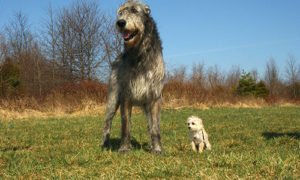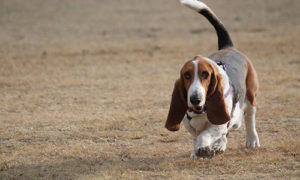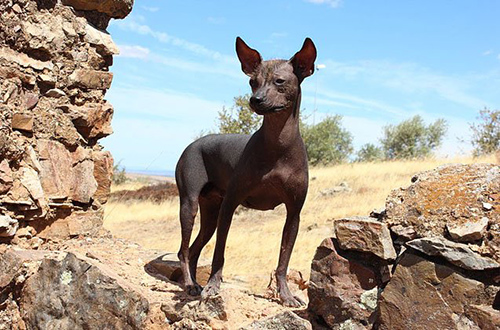
The Peruvian Inca Orchid is an ancient dog that’s closely related to the Xoloitzcuintli of Mexico. For instance, around 750 AD, South America Moche culture portrayed the breed in its artwork.
Prevalent in pre-Inca times as prized pets and bed-warmers, the breed became rarer in its native land after European conquerors’ arrival. American Jack Walklin exported the first specimens to America during the 1960s.
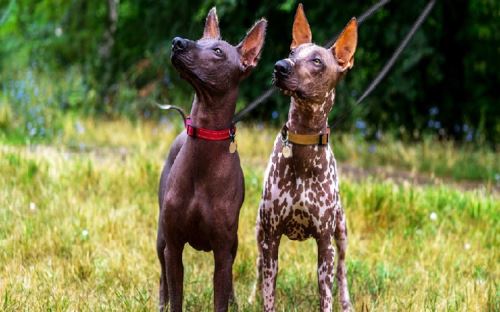
Another American, Fred Drew, organized the first documented breeding program and initiated efforts to get the breed recognized. Thanks to his work, groups in America and Europe began promoting the breed. Peru recognized the breed in 1981; its official name in Peru and with the FCI is Perro sin Pelo del Peru (“dog without hair of Peru”).
This sighthound comes in hairless and coated varieties and three sizes. It is well balanced, elegant, and sturdy yet never coarse. The chest reaches about to the elbow. The underline is graceful with long legs.
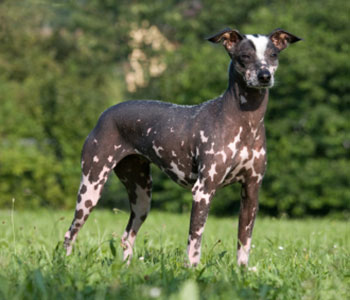
Body proportions range from a square (males) to slightly rectangular (females). The neck is curved, the topline is straight, and the tail is low set, thick, tapering, and raised when the dog is in motion. The skull is broad with a tapering muzzle. Incomplete dentition is typical in the hairless variety, but the coated variety’s ears are erect when attentive, while the coated types are semi-prick.
The slightly almond-shaped eyes range from black to yellow, including all shades of brown. The expression is alert and intelligent.
Peruvian Inca Orchid Breed Facts
Size: small – 9—15 inches, 8—17 pounds
medium – 15—19 inches, 17—26 pounds
large – 19—25 inches, 26—55 pounds
Activity level: This dog is an athletic hound; it needs daily walks and time to run in a fenced area. The breed enjoys lure coursing, rally, and agility, but these are not outdoor dogs. They are sensitive to cold, and fair-skinned dogs can get sunburn.
Peruvian Inca Orchid Temperament
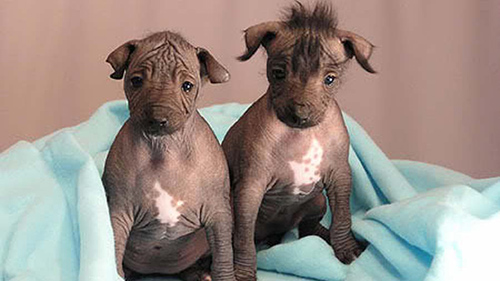
Peruvian Inca Orchids possess a typical sighthound temperament; they are affectionate and playful with family members and friendly toward other dogs. They can be protective and somewhat aloof, independent, and wary of strangers.
Sensitive and emotional, Peruvian Inca Orchids require ongoing socialization and gentle, positive training. Peruvians possess a high prey drive and hence, may not be reliable off the lead and should be supervised around small pets.
Grooming
Hairless dogs need baths every one or two weeks. Coated dogs need occasional brushing.
Coat: The hairless variety has beautiful, smooth, elastic skin and may have a small amount of bristly hair on the top of the head, the toes, and the tip of the tail. The coated variety has short or medium length hair with feathering on the body, neck, and ears.
Color: All colors are acceptable; in the hairless variety, skin can be a uniform color or can have unpigmented areas.
Peruvian Inca Orchid Buyer’s Guide and Advice
The club encourages owners of the breed to participate in AKC events with their dogs, and the club also welcomes potential Peruvian Inca Orchid owners so that they can get the information that they need to make an informed decision about owning the breed.
Parent club: Peruvian Inca Orchid Enthusiasts
Club Rescue: Peruvian Inca Orchid Rescue, Inc.

